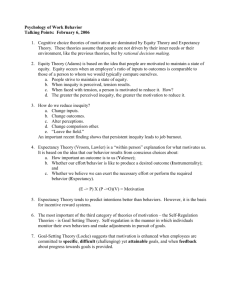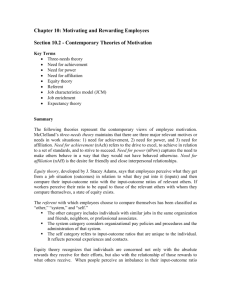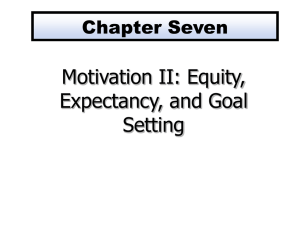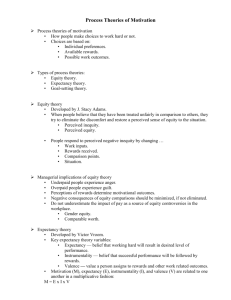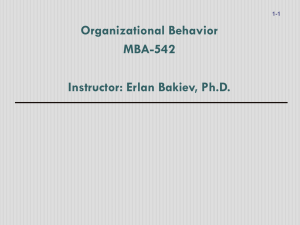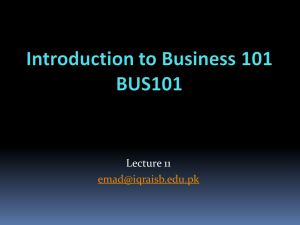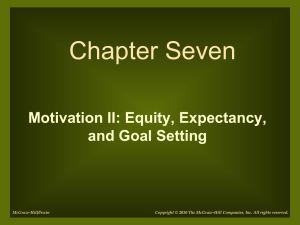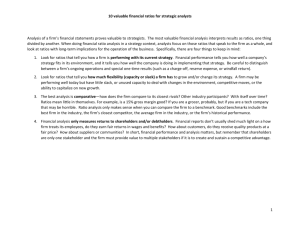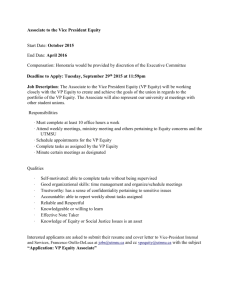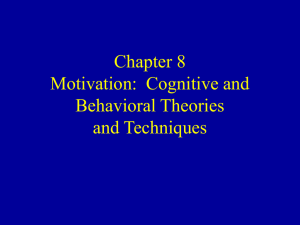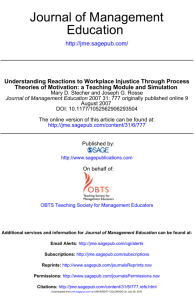Equity Theory
advertisement
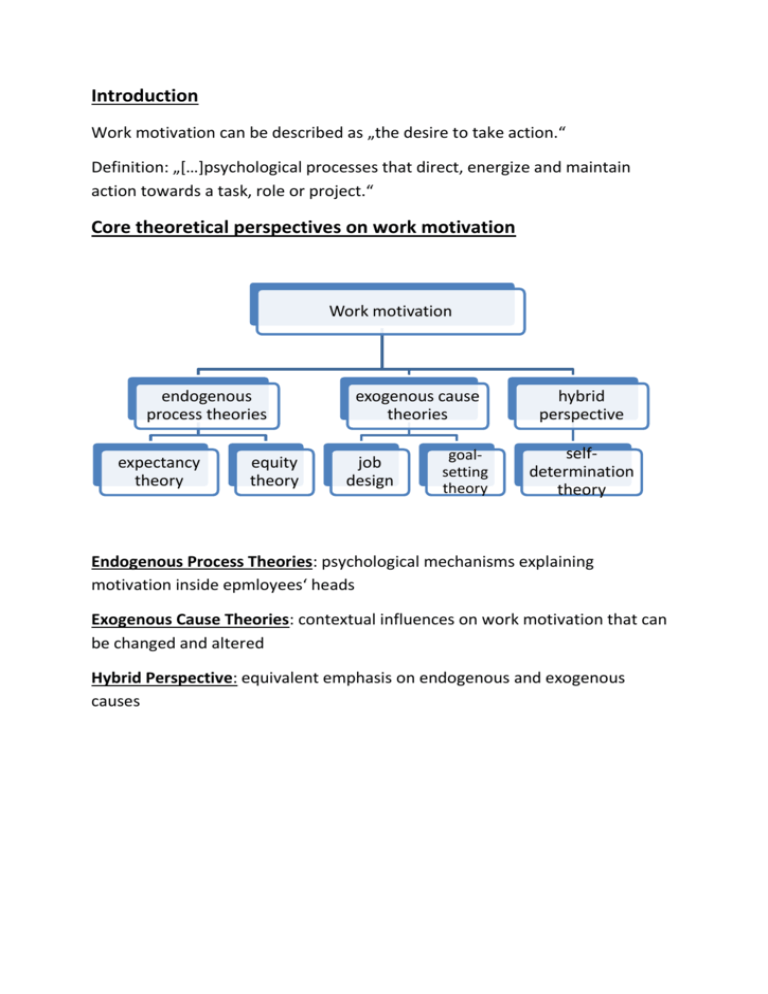
Introduction Work motivation can be described as „the desire to take action.“ Definition: „[…]psychological processes that direct, energize and maintain action towards a task, role or project.“ Core theoretical perspectives on work motivation Work motivation endogenous process theories expectancy theory equity theory exogenous cause theories job design goalsetting theory hybrid perspective selfdetermination theory Endogenous Process Theories: psychological mechanisms explaining motivation inside epmloyees‘ heads Exogenous Cause Theories: contextual influences on work motivation that can be changed and altered Hybrid Perspective: equivalent emphasis on endogenous and exogenous causes Employees choose to invest effort in courses of action by weighing their relative utilities probabilities of achieving desired outcome instrumentality Expectancy valence motivation influence on effort: if one of these beliefs is missing, course of action will not be seleceted! Limitations of Expectancy Theory Expectancy, instrumentality and valence leave consinderable variance unexplained Over calculative: caricature of how employees make decisions and experience motivation (Who actually calculates probablities?) affective components which influence expectancy, instrumentality and valence judgements No specification of nature and source of variations in employees‘ beliefs and judgements (enjoying experience of expending effort; performance itself as reward even without external outcomes) No explanation of how employees update and change their beliefs over time Conclusion Expectancy Theory Focus: within-person-decision that employees make about whether, where and how to invest their time and energy Focus on identifying key psychological forces that guide decisions about effort and understanding their consequences Diagnosing and resolving motivational problems in organizations NOT focussing on specifying causes or fluctuations Equity Theory - Placing motivation in a social context Central assumption: employees are motivated, when their inputs (effort, knowledge, skill, loyalty..) are matched by outcomes (pay, bonuses, benefits, recogntion) which creates a sense of equity or fairness Outcomes ≠ Input Distress, perception of inequity employee tries to reduce distress Feeling under-rewarded: reduction of input, attempting to reduce other‘s inputs, seeking to increase their outcomes, aiming to decrease coworkers outcomes Feeling over-rewarded: increasing inputs or reducing outcomes Judgement of equity Evaluation of input-outcome ratios through comparisons Possible comparisons: 1. Outcome vs. Input (Input = effort, ability, seniority) 2. Input-outcome ratios and other input-outcome ratios (including my past i.-o. ratios and other people‘s i.-o. ratios) Social comparison motivation suffers, when others are perceived to maintain more favorable i.-o. ratios Over- and under-rewarding employees can be detrimental to motivation. Negative motivational and behavioral effects of under-reward inequity Mixed results about consequences of over-reward inequity New approach: including understanding individual differences in equity sensivity Equity preferences benevolent Preferring a lower inputoutcome ratio compared to others Under-reward inequity leads to higher motivation than for equity sensitive/entitled employees Equity sensitive entitled Preferring an equal input-outcome ratio compared to others Preferring a higher inputoutcome ratio compared to others Perceiving distress when receiving lower outcomes than coworkers
